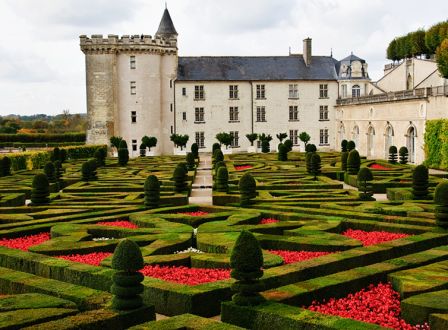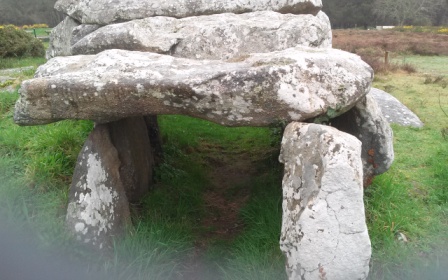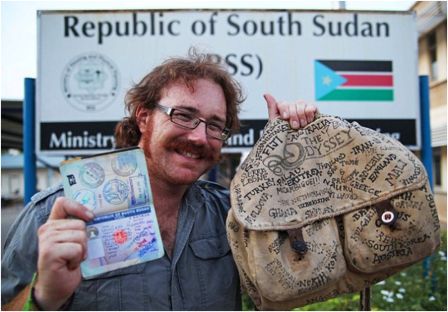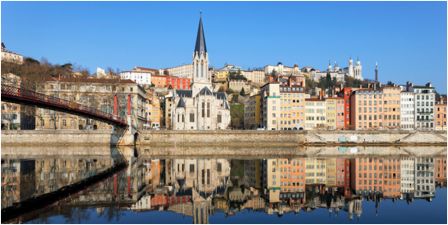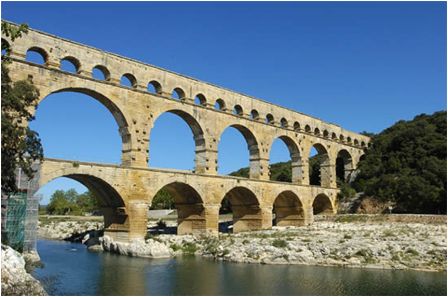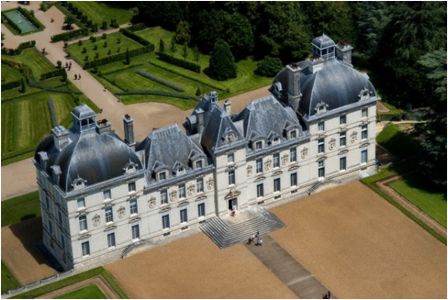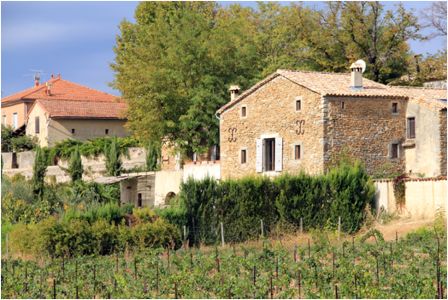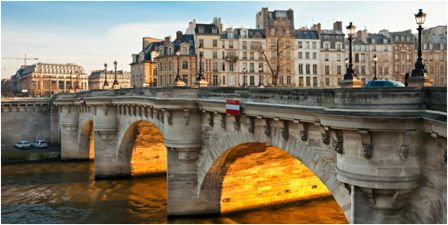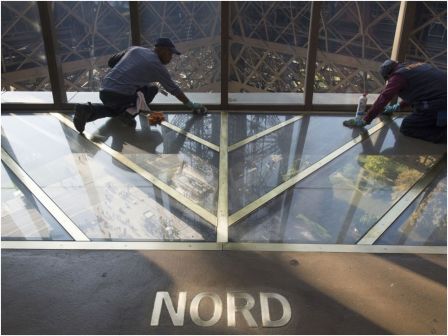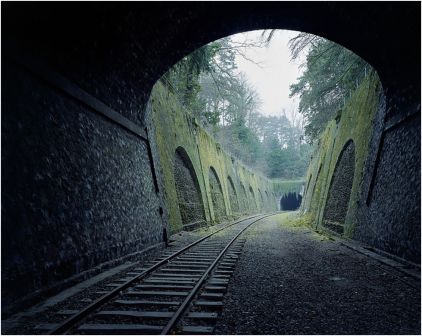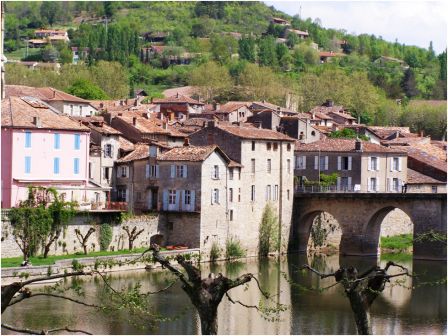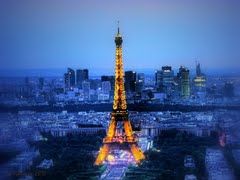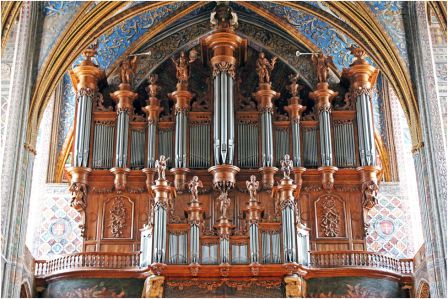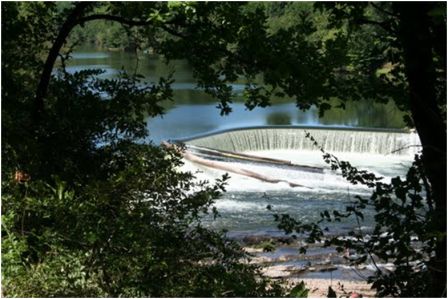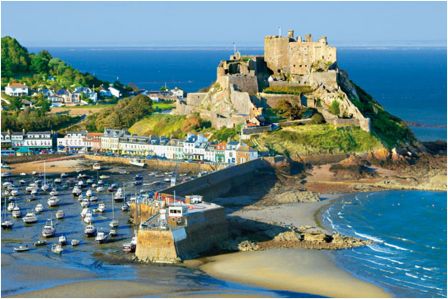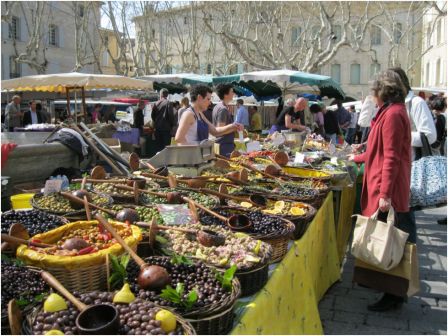Le Quesnoy
The Le Quesnoy Story
(6).jpg)
On 4 November 1918, the New Zealand Division liberated Le Quesnoy, a town of some 3000 people in north east France. It had endured four hard years of occupation since the German advance in August 1914.
Cheering crowds greeted the New Zealand Division and the events of the day made such an impact that they have been commemorated each year since 1919. In turn this has forged strong bonds between New Zealand and France.
In August 1918, Allied armies broke through the heavily-defended German Hindenburg Line and began advancing east and northwards. By early November the New Zealand Division was outside Le Quesnoy. The next phase would involve the town although it was not the primary objective. The assault intended to take the allied lines to the north and west of beyond Le Quesnoy towards the Mormal Forest. Three divisions were involved, the British 37th and 62nd along with the New Zealanders.
The aim of the operation was to invest the town and prevent its influencing the advance towards the River Sambre, along with the capture or destruction of the German divisional artillery which was located beyond Le Quesnoy. The Division was prepared to take the town by force although this would involve death and destruction for its inhabitants. However, investing and isolating to force a surrender was considered viable.
The map shows the final objective on 4 November 1918, the red line to the east of Le Quesnoy.
Le Quesnoy is a walled mediaeval fortress, protecting a river valley that for centuries was swept by conflict. Settlement dates back to the 12 century and its fortifications to 1536, constructed to defend what was the Spanish Netherlands. After the region was captured by France in 1654 under King Louis XIV, he ordered his military engineer Sébastien le Prestre de Vauban to build a series of forts to protect the new north-east borders.
Le Quesnoy was one of his best, with a maze of ramparts, high walls, causeways and tunnels surrounded by moats. While considered outmoded by the 19th century, they would prove to be an effective defence with the weapons available to the Germans in 1918. The town was taken by German forces in August 1914.
Troops were in place soon after dark on the night of 3 November. At 5.30am, the guns opened fire and the New Zealand Division raced forward. The creeping barrage machine guns maintained intense fire throughout the first phase, in spite of the heavy shelling that came down round about the positions.
The 3rd New Zealand (Rifle) Brigade resting before the Le Quesnoy
attack (NZ Army Museum)
The 3rd (New Zealand) Rifle Brigade had to clear positions forward of the town and this indicated that the Germans were prepared to fight and hold. The New Zealand Machine Gun Battalion supported with covering fire coordinated in consultation with the infantry brigadiers. The Auckland and Otago Companies, with two sections of the Canterbury Company, provided the covering fire for the first phase. The Otago and Auckland Companies put down barrages along the southern and northern outskirts of the town.
By mid morning the town was completely enveloped. Several attempts to induce the German garrison to surrender had failed and the Rifle Brigade began attempts to penetrate the defences. Covered by mortar and machine gun fire, and shrouded by mist and smoke projected forward by the Royal Engineers, the New Zealanders moved forward under fire from machine guns and snipers, towards the outer ramparts. Lieutenant Francis Evans of the 4th Battalion, leading a patrol, reached the outer ramparts before being killed.
New Zealand gunners in action with a 4.5in howitzer near Le Quesnoy
(Alexander Turnbull Library)
At around 4pm, Lieutenant H W Kerr led a patrol to a location on the walls where a narrow bridge was located. It was about the only place where scaling ladders could reach the crest of the defences. He took with him the battalion’s intelligence officer, 2nd Lieutenant L C L Averill MC, who had already spent much of the morning reconnoitring the defences.
Supported by mortars and covering fire from Lewis machine guns, they reached the bridge and erected the ladder. It was steadied by two riflemen and Averill was first up. The Division’s Official History recorded the moment:
“ … Averill quickly reached the top of the brick
work and stepped over the coping onto the grassy bank. Crouching behind
it, he peered over. It was one of the most dramatic moments in the
Division’s history. There was an instant crashing through some
brushwood on the far side and Averill saw two Germans of the bombing
post rushing away.
“… He sent a revolver bullet after them. Kerr was now on the topmost
rung. The two officers could see a pair of machine guns on the salient
on their right, pointing into the moat but abandoned. They stood up
and walked over the top of the grass slope and down the other side
towards the boulevard. They were greeted by a great jabbering of
German. Kerr fired a shot at the man who appeared to be leader, but
missed. The whole enemy party bolted into an underground cavern under
the rampart.
“… By this time the remainder of the battalion were swarming up the
ladder. They were led by Barraclough himself who took with him a
signaller and apparatus in order to open communications with brigade
headquarters and establish the 4th Battalion’s claim to the honour of
the town’s capture. “
Several hundred prisoners were taken, along with quantities of guns of all calibres. Only the break into the town triggered a mass surrender by the defenders and shortly afterwards the 2nd Battalion marched in through the Valenciennes Gate. They were greeted by cheering townspeople who appeared from behind closed doorways as soon as they saw the New Zealanders. A German prisoner proved helpful in locating those of his colleagues who were hiding underground and soon some 700 enemy soldiers were in captivity.
For the New Zealand Division, the action was the climax of a bitter
campaign that began when it arrived in France in May 1916. Although
hard fighting took place in the following days until the Armistice on 11
November, nothing would supplant the action that day.
The New Zealand Maori Pioneer Battalion, which played a supporting
role by clearing roads and mined bridges, observed the assault. James
Cowan, its official historian, later wrote:
"It was singular to see at one part of the
ramparts our men and the Germans fighting for possession while a few
hundred yards away the civilian inhabitants were joyously cheering the
New Zealanders on.
"That morning saw the memorable offensive preliminary to the capture of
Le Quesnoy. Heavy fighting continued all day and gave the New
Zealanders a splendid opportunity, and the last, as it developed, of
displaying their dash and their pertinacity. With scaling ladders a few
daring men entered the place, after some rifle and machine-gun
fighting, and others followed. In the process of cleaning up the town
it was found strongly held in places and defended with machine-guns.
"After some street fighting, however, the whole of the garrison,
numbering about 1,500, surrendered. The day's operations were
thoroughly successful. Practically the whole of the Foret de Mormal was
cleared, and a total of 27 officers and 2,050 other ranks were
captured, besides over 40 guns."
At 11am the next day, a parade was held with the 4th Battalion formed up in the square. As the New Zealand Division's Official History recorded:
“… preceded by the Mayor and town Councillors and the band of the 2nd Battalion, the parade marched past the brigadier and down a long lane of wildly applauding civilians, across the ramparts and back to billets in (nearby) Solesmes. There was not a vehicle in the transport but was flying the tricolour and each platoon had its loads of flowers and flags and souvenirs from the delighted people.”
New Zealand soldiers parade at Le Quesnoy (Alexander Turnbull Library)
Next day the French president, Raymond Poincaré paid an official visit with the New Zealanders providing a guard of honour at the Place d’Armes while on the 14th of November, there was an exchange of flags between the town and the Division.
New Zealand officers enter Le Quesnoy (Alexander Turnbull Library)
Second Lieutenant L C L Averill MC is remembered as the first New Zealander into Le Quesnoy. Born on 25 March 1897, he was a medical student at the time of enlistment. He left with the 34th Reinforcements in early 1918 and was awarded a Military Cross for “exceptional gallantry and fine leadership” during the assault on Bapaume in August 1918.
After the war, he completed his medical studies and spent many years in practice in Christchurch. For the rest of his life he remained attached to Les Quesnoy. In 1961 he was appointed Commander of the Order of St Michael and St George (CMG) for outstanding services to medicine and the community while in 1968 Le Quesnoy appointed him Citoyen d'Honneur. In 1973 he received the ultimate accolade when the French Government made him a chevalier de la Légion d'Honneur. He died in Christchurch on 4 June 1981.
The French sculptor Félix Desruelles prepared the memorial which was unveiled at a ceremony on 15 July 1923 attended by Marshal Joseph Joffre, Lord Alfred Milner (who had served in the wartime British Cabinet), the New Zealand High Commissioner in London, Sir James Allen and Lieutenant Averill.
Lieutenant L C L Averill points to the place where he scaled the ramparts at the
unveiling of the New Zealand Memorial on 15 July 1923 (Alexander Turnbull Library)
The New Zealand Division is remembered by this inscription on the right face of the
French war memorial in Le Quesnoy (Brian Lockstone)
One of the last survivors of Le Quesnoy (and indeed one of the last two surviving members of the New Zealand Division and the New Zealand Expeditionary Force) was Lieutenant Colonel C L "Curly" Blyth. As a young subaltern (second lieutenant) he had witnessed the attack. In 1998 he too became a chevalier de la Légion d'Honneur and the New Zealand Government made him a Member of the New Zealand Order of Merit for services to war veterans and the community. He died on 10 October 2001, at the age of 105.
A field map used in the attack
Illustrations are reproduced by kind permission of the Alexander Turnbull Library and the New Zealand Army Museum.
I am grateful to Brigadier Antony Hayward and Lieutenant-Colonel
Nicholas Gillard, New Zealand Defence Force, London, for their helpful
insights and observations.
Brian Lockstone, Paris, October 2012 ©
The First World War (1914–1918) was one of the most significant events of the 20th Century and had a seismic impact on New Zealand society. The legacy of the war, the growing attendance at Anzac Day ceremonies in New Zealand, and the steady increase in the number of visitors to battlefields in Turkey and Europe demonstrate a continuing interest in its significance.
The New Zealand Government has developed WW100 New Zealand, an official programme to mark the First World War Centenary from 2014 to 2018. The programme is led by the Minister for Arts, Culture and Heritage, Hon. Christopher Finlayson.
On 4 November 1918, the New Zealand Division liberated Le Quesnoy, a town of some 3000 people in north east France. It had endured four hard years of occupation since the German advance in August 1914.
Cheering crowds greeted the New Zealand Division and the events of the day made such an impact that they have been commemorated each year since 1919. In turn this has forged strong bonds between New Zealand and France.
In August 1918, Allied armies broke through the heavily-defended German Hindenburg Line and began advancing east and northwards. By early November the New Zealand Division was outside Le Quesnoy. The next phase would involve the town although it was not the primary objective. The assault intended to take the allied lines to the north and west of beyond Le Quesnoy towards the Mormal Forest. Three divisions were involved, the British 37th and 62nd along with the New Zealanders.
The aim of the operation was to invest the town and prevent its influencing the advance towards the River Sambre, along with the capture or destruction of the German divisional artillery which was located beyond Le Quesnoy. The Division was prepared to take the town by force although this would involve death and destruction for its inhabitants. However, investing and isolating to force a surrender was considered viable.
The map shows the final objective on 4 November 1918, the red line to the east of Le Quesnoy.
Le Quesnoy is a walled mediaeval fortress, protecting a river valley that for centuries was swept by conflict. Settlement dates back to the 12 century and its fortifications to 1536, constructed to defend what was the Spanish Netherlands. After the region was captured by France in 1654 under King Louis XIV, he ordered his military engineer Sébastien le Prestre de Vauban to build a series of forts to protect the new north-east borders.
Le Quesnoy was one of his best, with a maze of ramparts, high walls, causeways and tunnels surrounded by moats. While considered outmoded by the 19th century, they would prove to be an effective defence with the weapons available to the Germans in 1918. The town was taken by German forces in August 1914.
Troops were in place soon after dark on the night of 3 November. At 5.30am, the guns opened fire and the New Zealand Division raced forward. The creeping barrage machine guns maintained intense fire throughout the first phase, in spite of the heavy shelling that came down round about the positions.
The 3rd New Zealand (Rifle) Brigade resting before the Le Quesnoy
attack (NZ Army Museum)
The 3rd (New Zealand) Rifle Brigade had to clear positions forward of the town and this indicated that the Germans were prepared to fight and hold. The New Zealand Machine Gun Battalion supported with covering fire coordinated in consultation with the infantry brigadiers. The Auckland and Otago Companies, with two sections of the Canterbury Company, provided the covering fire for the first phase. The Otago and Auckland Companies put down barrages along the southern and northern outskirts of the town.
By mid morning the town was completely enveloped. Several attempts to induce the German garrison to surrender had failed and the Rifle Brigade began attempts to penetrate the defences. Covered by mortar and machine gun fire, and shrouded by mist and smoke projected forward by the Royal Engineers, the New Zealanders moved forward under fire from machine guns and snipers, towards the outer ramparts. Lieutenant Francis Evans of the 4th Battalion, leading a patrol, reached the outer ramparts before being killed.
New Zealand gunners in action with a 4.5in howitzer near Le Quesnoy
(Alexander Turnbull Library)
At around 4pm, Lieutenant H W Kerr led a patrol to a location on the walls where a narrow bridge was located. It was about the only place where scaling ladders could reach the crest of the defences. He took with him the battalion’s intelligence officer, 2nd Lieutenant L C L Averill MC, who had already spent much of the morning reconnoitring the defences.
Supported by mortars and covering fire from Lewis machine guns, they reached the bridge and erected the ladder. It was steadied by two riflemen and Averill was first up. The Division’s Official History recorded the moment:
“ … Averill quickly reached the top of the brick
work and stepped over the coping onto the grassy bank. Crouching behind
it, he peered over. It was one of the most dramatic moments in the
Division’s history. There was an instant crashing through some
brushwood on the far side and Averill saw two Germans of the bombing
post rushing away.
“… He sent a revolver bullet after them. Kerr was now on the topmost
rung. The two officers could see a pair of machine guns on the salient
on their right, pointing into the moat but abandoned. They stood up
and walked over the top of the grass slope and down the other side
towards the boulevard. They were greeted by a great jabbering of
German. Kerr fired a shot at the man who appeared to be leader, but
missed. The whole enemy party bolted into an underground cavern under
the rampart.
“… By this time the remainder of the battalion were swarming up the
ladder. They were led by Barraclough himself who took with him a
signaller and apparatus in order to open communications with brigade
headquarters and establish the 4th Battalion’s claim to the honour of
the town’s capture. “
Several hundred prisoners were taken, along with quantities of guns of all calibres. Only the break into the town triggered a mass surrender by the defenders and shortly afterwards the 2nd Battalion marched in through the Valenciennes Gate. They were greeted by cheering townspeople who appeared from behind closed doorways as soon as they saw the New Zealanders. A German prisoner proved helpful in locating those of his colleagues who were hiding underground and soon some 700 enemy soldiers were in captivity.
For the New Zealand Division, the action was the climax of a bitter
campaign that began when it arrived in France in May 1916. Although
hard fighting took place in the following days until the Armistice on 11
November, nothing would supplant the action that day.
The New Zealand Maori Pioneer Battalion, which played a supporting
role by clearing roads and mined bridges, observed the assault. James
Cowan, its official historian, later wrote:
"It was singular to see at one part of the
ramparts our men and the Germans fighting for possession while a few
hundred yards away the civilian inhabitants were joyously cheering the
New Zealanders on.
"That morning saw the memorable offensive preliminary to the capture of
Le Quesnoy. Heavy fighting continued all day and gave the New
Zealanders a splendid opportunity, and the last, as it developed, of
displaying their dash and their pertinacity. With scaling ladders a few
daring men entered the place, after some rifle and machine-gun
fighting, and others followed. In the process of cleaning up the town
it was found strongly held in places and defended with machine-guns.
"After some street fighting, however, the whole of the garrison,
numbering about 1,500, surrendered. The day's operations were
thoroughly successful. Practically the whole of the Foret de Mormal was
cleared, and a total of 27 officers and 2,050 other ranks were
captured, besides over 40 guns."
At 11am the next day, a parade was held with the 4th Battalion formed up in the square. As the New Zealand Division's Official History recorded:
“… preceded by the Mayor and town Councillors and the band of the 2nd Battalion, the parade marched past the brigadier and down a long lane of wildly applauding civilians, across the ramparts and back to billets in (nearby) Solesmes. There was not a vehicle in the transport but was flying the tricolour and each platoon had its loads of flowers and flags and souvenirs from the delighted people.”
New Zealand soldiers parade at Le Quesnoy (Alexander Turnbull Library)
Next day the French president, Raymond Poincaré paid an official visit with the New Zealanders providing a guard of honour at the Place d’Armes while on the 14th of November, there was an exchange of flags between the town and the Division.
New Zealand officers enter Le Quesnoy (Alexander Turnbull Library)
Second Lieutenant L C L Averill MC is remembered as the first New Zealander into Le Quesnoy. Born on 25 March 1897, he was a medical student at the time of enlistment. He left with the 34th Reinforcements in early 1918 and was awarded a Military Cross for “exceptional gallantry and fine leadership” during the assault on Bapaume in August 1918.
After the war, he completed his medical studies and spent many years in practice in Christchurch. For the rest of his life he remained attached to Les Quesnoy. In 1961 he was appointed Commander of the Order of St Michael and St George (CMG) for outstanding services to medicine and the community while in 1968 Le Quesnoy appointed him Citoyen d'Honneur. In 1973 he received the ultimate accolade when the French Government made him a chevalier de la Légion d'Honneur. He died in Christchurch on 4 June 1981.
The French sculptor Félix Desruelles prepared the memorial which was unveiled at a ceremony on 15 July 1923 attended by Marshal Joseph Joffre, Lord Alfred Milner (who had served in the wartime British Cabinet), the New Zealand High Commissioner in London, Sir James Allen and Lieutenant Averill.
Lieutenant L C L Averill points to the place where he scaled the ramparts at the
unveiling of the New Zealand Memorial on 15 July 1923 (Alexander Turnbull Library)
The New Zealand Division is remembered by this inscription on the right face of the
French war memorial in Le Quesnoy (Brian Lockstone)
One of the last survivors of Le Quesnoy (and indeed one of the last two surviving members of the New Zealand Division and the New Zealand Expeditionary Force) was Lieutenant Colonel C L "Curly" Blyth. As a young subaltern (second lieutenant) he had witnessed the attack. In 1998 he too became a chevalier de la Légion d'Honneur and the New Zealand Government made him a Member of the New Zealand Order of Merit for services to war veterans and the community. He died on 10 October 2001, at the age of 105.
A field map used in the attack
Illustrations are reproduced by kind permission of the Alexander Turnbull Library and the New Zealand Army Museum.
I am grateful to Brigadier Antony Hayward and Lieutenant-Colonel
Nicholas Gillard, New Zealand Defence Force, London, for their helpful
insights and observations.
Brian Lockstone, Paris, October 2012 ©
The First World War (1914–1918) was one of the most significant events of the 20th Century and had a seismic impact on New Zealand society. The legacy of the war, the growing attendance at Anzac Day ceremonies in New Zealand, and the steady increase in the number of visitors to battlefields in Turkey and Europe demonstrate a continuing interest in its significance.
The New Zealand Government has developed WW100 New Zealand, an official programme to mark the First World War Centenary from 2014 to 2018. The programme is led by the Minister for Arts, Culture and Heritage, Hon. Christopher Finlayson.

